SHIFT at Digital Heritage 2025
SHIFT marked the final few weeks with a series of events at the Digital Heritage 2025 World Expo and Congress in Siena, Italy, from 8–13th September 2025. As one of Europe’s leading initiatives for advancing digital transformation in cultural heritage, SHIFT showcase its innovative tools and results to an international audience of cultural heritage professionals, […]
SHIFT at Digital Heritage 2025 in Siena
The SHIFT project will mark its final event at the Digital Heritage 2025 World Expo and Congress in Siena, Italy, from 8–13th September 2025. As one of Europe’s leading initiatives for advancing digital transformation in cultural heritage, SHIFT will showcase its innovative tools and results to an international audience of cultural heritage professionals, policymakers, and […]
SHIFT at Digital Heritage 2025: Presenting Our Final Results in Siena
This September, SHIFT will take centre stage at Digital Heritage 2025 in Siena, the premier international event for cultural heritage digitalisation. For three years, SHIFT has been working at the intersection of cultural heritage and cutting-edge technology, developing tools and approaches that make heritage more accessible, inclusive, and engaging for all. Now, as the project […]
Focus Group Testing Continues for the SHIFT Project Developments in Hungary
Cultural accessibility has been given a prominent role in our project, which aims to make museum experiences more accessible to a wider audience. The latest workshop, held at the Semmelweis Museum of the History of Medicine, focused on the specific needs of blind and visually impaired visitors. The event was attended by a group from […]
SHIFT to Inclusion Workshop organised by ANBPR
ANBPR organised a workshop title SHIFT TO INCLUSION, at the National Library of Romania on May 27th, 2024. The workshop was attended by 30 participants, representing vulnerable groups (people with visual, hearing impairments as well as individuals on the autism spectrum, teachers, parents and accompanying persons). The participants were introduced to the SHIFT project, the […]
